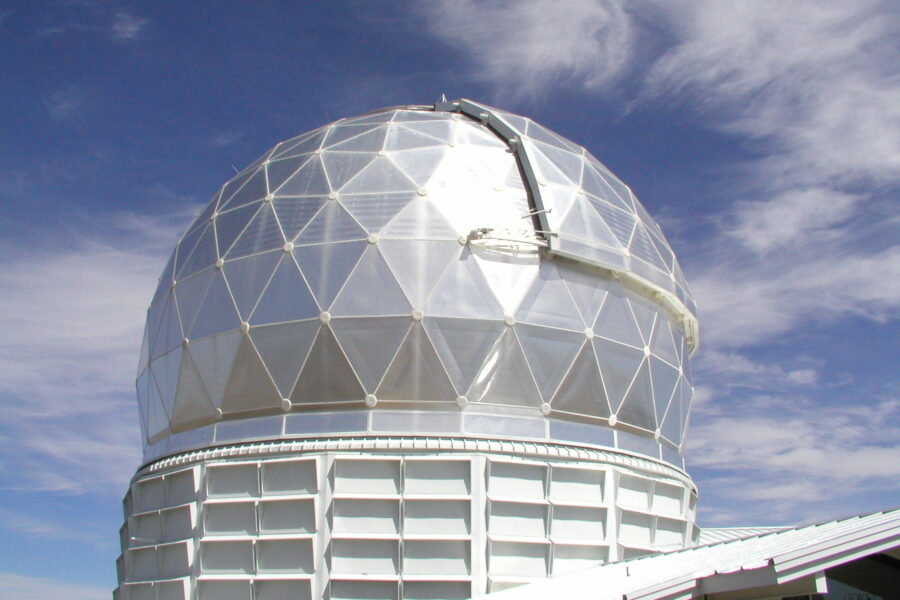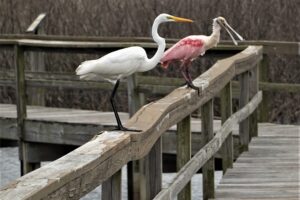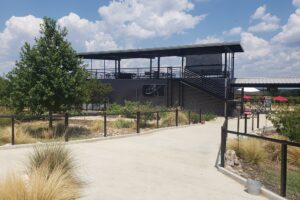McDonald Observatory
On our way up the mountain to the McDonald Observatory, the road is wide and smooth, the views expansive. Breathtaking. There are many other times when I have been in a car driving to the top of this soft rounded peak in the Davis Mountains. The first time I was barely old enough to be in school, and I was terrified. I feel the road must have been narrower back then, and not half as smooth as my Father drove our family of five higher and higher with me and my older sister in the back seat—butterflies in our tummies.


Cresting the hill, we follow the signs to the parking lot of the Frank N. Bash Visitors Center. Being very early for our appointed Twilight Program the parking lot is empty and we are able to snag a prime space, as close to the entrance as you can possibly get–which isn’t close at all. After checking in at the reception desk, we head to the snack bar-ish Star Date Cafe, taking our time, trying to figure out which sandwich to order. Michael grabs chips and drinks while I think.

Sitting at a table outside, munching on a surprisingly delicious chicken-bacon-avocado concoction, we watch the clouds massing together, forming layer upon layer of floating ice crystals. But there is still blue. A touch. By the time 6:45 rolls around and the orientation Twilight Program begins, a mass of swirling, billowing shades of gray form an ominous backdrop from horizon to horizon. Perhaps when the sun drops below the land it will pull the clouds with it. It is the end of the desert monsoon season. That is the pattern. There is still time.
We can only hope.

The Twilight Program is delightful as well as educational and entertains all of the kids in the audience–the adults too. One young boy asks and answers question after question after question. I lean over to Michael, whispering, “I think we have a young Sheldon in the audience.” He smiles and we both think of The Big Bang Theory television show and the offshoot—which we think highly entertaining—Young Sheldon. We smile again.
The Star Party That Isn’t
After orientation, we gather outside to hear our fate—to be or not to be a Star Party. Gazing up at the sky, I can’t help but notice that the sun left the clouds behind on its journey west. They are darker. Threatening. Lightning flashes brightly on the eastern horizon. We learn that our impending Star Party is not to be, but instead, we will have various lectures in a variety of rooms in the Visitor Center. Michael and I turn, skirting the crowd, heading for the entrance while the speaker continues. There are hundreds of people here. Experience has taught us not to be too polite and let everyone else go first. Plus, age should have its benefits.
While we sit and listen to individuals much smarter than we are, the heavens open and the sky weeps — the tears are hard and long. We are grateful for our soft dry seats in the auditorium.
We love the lecture. I see more and learn more than I ever would from standing in line to look through a telescope. If I said it boggles my mind it would be such an understatement. It is incomprehensible. The Sun is one of about 200 billion stars just in our single galaxy — the Milky Way. And based on space exploration there are at least a 100 billion galaxies –maybe more. 100 billion times 200 billion on the low end. How many zeros is that?
Someone asks about space having a defining edge–or is it infinity. Our lecturer says, “Wow–that’s quite a question.”
At the McDonald Observatory, what I learn more than anything is our insignificance in the scheme of things, and how much I don’t know. If I truly think about it and try to understand it, my mind would be more than boggled. I recall Carl Sagan’s words about the earth being a pale blue dot. Again, hard to fathom. But true. Later still I look up the quote, and my mind explodes.
Carl Sagan’s Pale Blue Dot

“Look again at that dot. That’s here. That’s home. That’s us. On it everyone you love, everyone you know, everyone you ever heard of, every human being who ever was, lived out their lives. The aggregate of our joy and suffering, thousands of confident religions, ideologies, and economic doctrines, every hunter and forager, every hero and coward, every creator and destroyer of civilization, every king and peasant, every young couple in love, every mother and father, hopeful child, inventor and explorer, every teacher of morals, every corrupt politician, every “superstar,” every “supreme leader,” every saint and sinner in the history of our species lived there-on a mote of dust suspended in a sunbeam.
The Earth is a very small stage in a vast cosmic arena. Think of the endless cruelties visited by the inhabitants of one corner of this pixel on the scarcely distinguishable inhabitants of some other corner, how frequent their misunderstandings, how eager they are to kill one another, how fervent their hatreds. Think of the rivers of blood spilled by all those generals and emperors so that, in glory and triumph, they could become the momentary masters of a fraction of a dot.
Our posturings, our imagined self-importance, the delusion that we have some privileged position in the Universe, are challenged by this point of pale light. Our planet is a lonely speck in the great enveloping cosmic dark. In our obscurity, in all this vastness, there is no hint that help will come from elsewhere to save us from ourselves.
The Earth is the only world known so far to harbor life. There is nowhere else, at least in the near future, to which our species could migrate. Visit, yes. Settle, not yet. Like it or not, for the moment the Earth is where we make our stand.
It has been said that astronomy is a humbling and character-building experience. There is perhaps no better demonstration of the folly of human conceits than this distant image of our tiny world. To me, it underscores our responsibility to deal more kindly with one another, and to preserve and cherish the pale blue dot, the only home we’ve ever known.”
― Carl Sagan, Pale Blue Dot: A Vision of the Human Future in Space









Leave a Reply
Your email is safe with us.